HDR Nature Photography
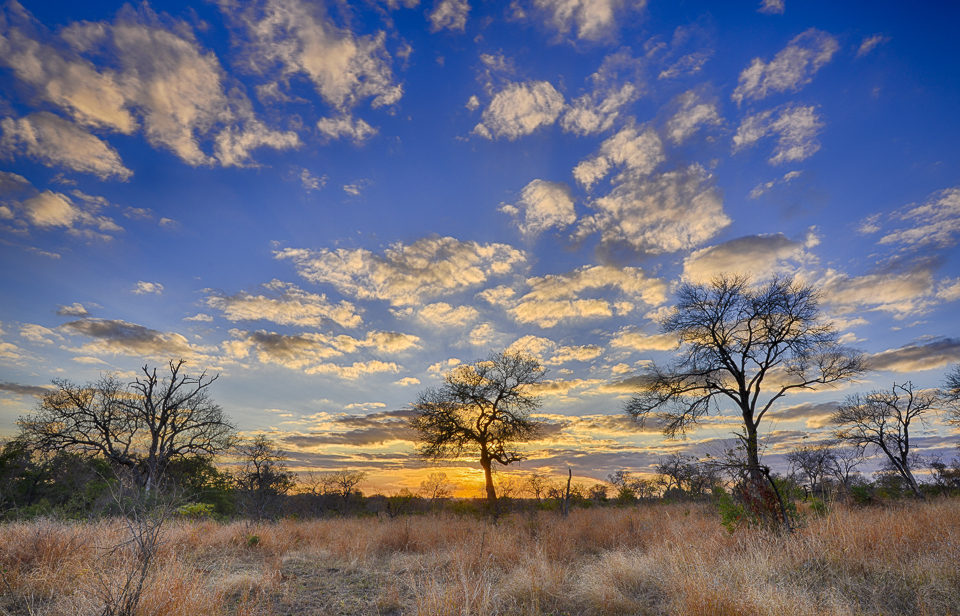
A few years ago the technique of using HDR (high dynamic range) photography became popular.
It’s a creative tool where you capture enough information to compress the tonal range of high-contrast scenes with software in post-processing. You capture at least 3 images by bracketing and sometimes even 9 images, depending on how much contrast there is in the scene. The more highlights and shadows the more bracketed shots you need.
At first I was skeptical about this technique as most of what I saw was over-done and I thought a more natural look would be more appropriate. Yes, HDR looks great with old cars
 Solitaire, namibia
Solitaire, namibiaold houses...
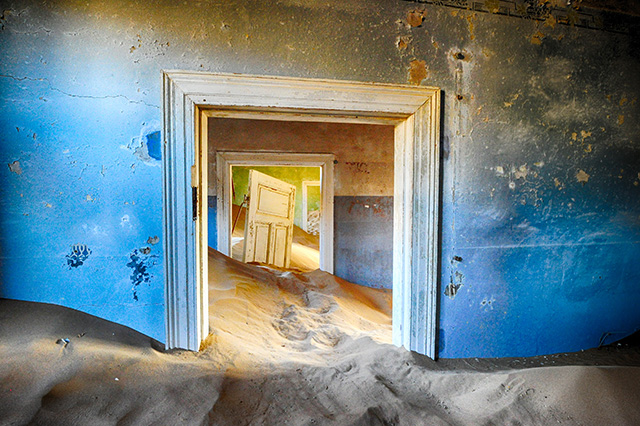 Kolmanskop
Kolmanskopand modern lodges...
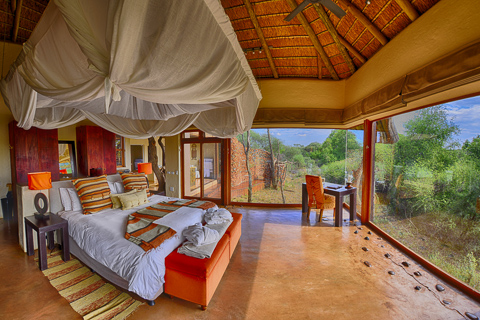
but not HDR nature photography, or so I thought.
Since then I have tried a few HDR products and the one that I am really happy with is Google’s free Nik Collection and the HDR Efex Pro tool.
I tried Enblend-enfuse and at first was happy with it but when I got my Nikon D800 body the program could not handle the big files, and I’m talking about Jpegs not the RAW files! I also tried Photomatix but preferred the look of HDR Efex Pro.
HDR Nature Photography - 2017 Update
In 2017 Google announced it is no longer supporting the Google Nik Collection so HDR Efex Pro will most probably no longer work properly with Photoshop, Lightroom and Windows updates.
I found another HDR software that is very cool - EasyHDR!
It is one of the easiest software programs to use for producing beautiful HDR images and costs just $39.00. Being a dedicated HDR software it has extra features that HDR Efex Pro does not have.
As nature or wildlife photographers we have very little control over the weather or the landscape and sometimes we come across an amazing scene but there is too much contrast or we are unable to use ND Grad filters and that is where HDR comes to the rescue.
Take this sunset scene...
 Canyon Lodge, Namibia
Canyon Lodge, NamibiaI have a set of Singh-ray split Graduated Neutral Density filters but realized I could not use them here – the rock formation sticks way up above the horizon and if I used the filters the top of the rock would be black. The rock is an important part of the image so I decided to use HDR and combined 9 images to get the final effect...
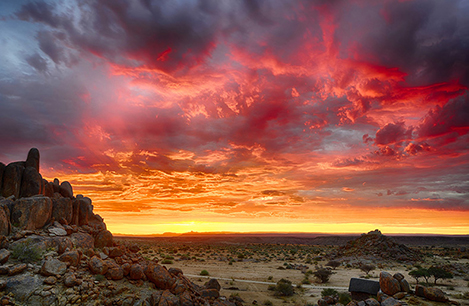
The nine files when processed contained over 10-stops of tonal range with no clipping. Compare this to the tonal latitude of slide film, which was just five stops! (Clipping results from capturing or processing an image where the exposure intensity in a certain area of the image falls outside the minimum and maximum intensity that can be represented).
I think the effect is great - not overdone and realistic.
The nice thing with HDR Efex Pro is that after combining the images you are provided with a whole lot of different presets to choose from, including a realistic category.
In most cases I try to use a tripod but sometimes it's simply not practical like with the old houses in Kolmanskop and the old rusty desert cars at Solitaire so then I handhold and try to ensure a fast shutter speed.
The critical thing is to ensure that no image is blurred. If you move a bit that's not a problem as HDR Efex Pro will re-align the images.
If you are shooting wildlife then it's important to ensure that your subject doesn't move like these lions lying under a tree in the Kgalagadi...
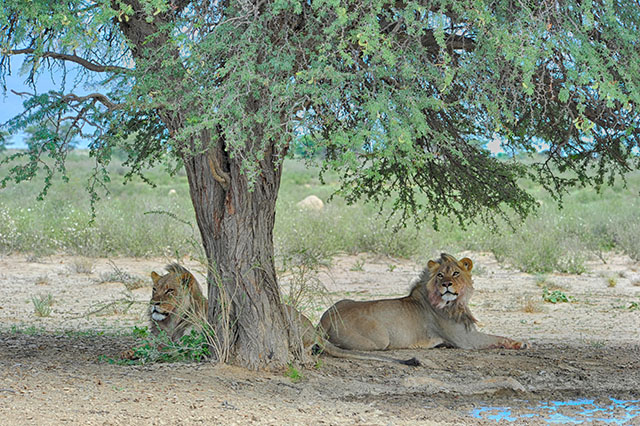
or these cheetahs at sunset in the Kruger Park...
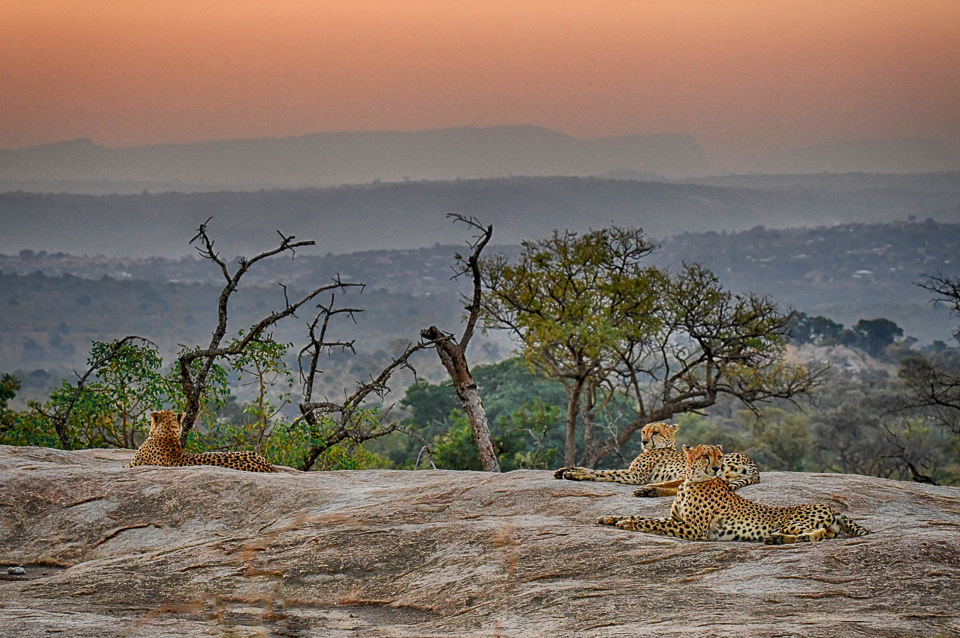
HDR nature photography can work - with the right software program and choosing a more realistic final image!
Return from HDR Nature Photography to Safari Photo Tips page
To make a safari rental booking in South Africa, Botswana or Namibia click here
"It's 768 pages of the most amazing information. It consists of, well, everything really. Photography info...area info...hidden roads..special places....what they have seen almost road by road. Where to stay just outside the Park...camp information. It takes quite a lot to impress me but I really feel that this book, which was 7 years in the making, is exceptional." - Janey Coetzee, founder of CAROK (Camps and Roads of Kruger) South Africa
"Having a passion for the region itself and having to know about all dynamics, water holes and ideal roads for a period of 6 years - I wish I had this guide on my first trip already!" - Morkel Erasmus, Secunda, South Africa
"Mario and Jenny take you to places that are not always visited, and their descriptions of the more remote camps will allow you to make an informed decision without wasting time and money" - Bob & Sherry Shepardson, DeBary, Florida, USA
"Your time and money are valuable and the information in this book will help you save both." - Don Stilton, Florida, USA
"I highly recommend the book to anyone visiting Etosha National Park to photograph the animals - or anyone considering an African photography safari in the future." - Anne Darling, Cognac, France
"As a photographer and someone who has visited and taken photographs in the Pilanesberg National Park, I can safely say that with the knowledge gained from this eBook, your experiences and photographs will be much more memorable." - Alastair Stewart, BC, Canada
"This work is so much more than an eBook, because it is also a guide, a tutorial, an inspiration and a must-have for anyone interested in wildlife photography" - Findtripinfo.com, USA
Photo Safaris on a Private Vehicle - just You, the guide & the animals!










New! Comments
Have your say about what you just read! Please leave us a comment in the box below.